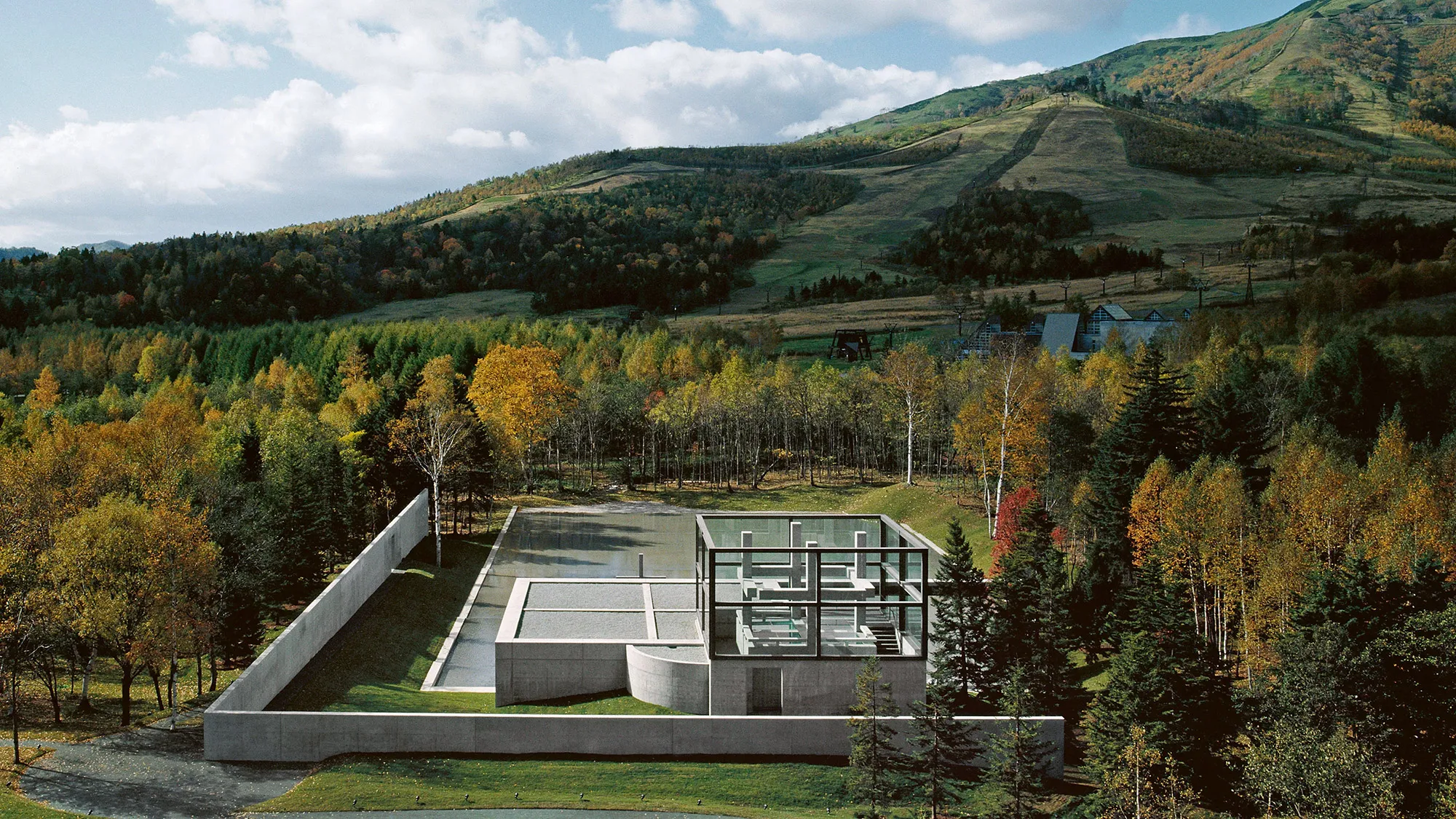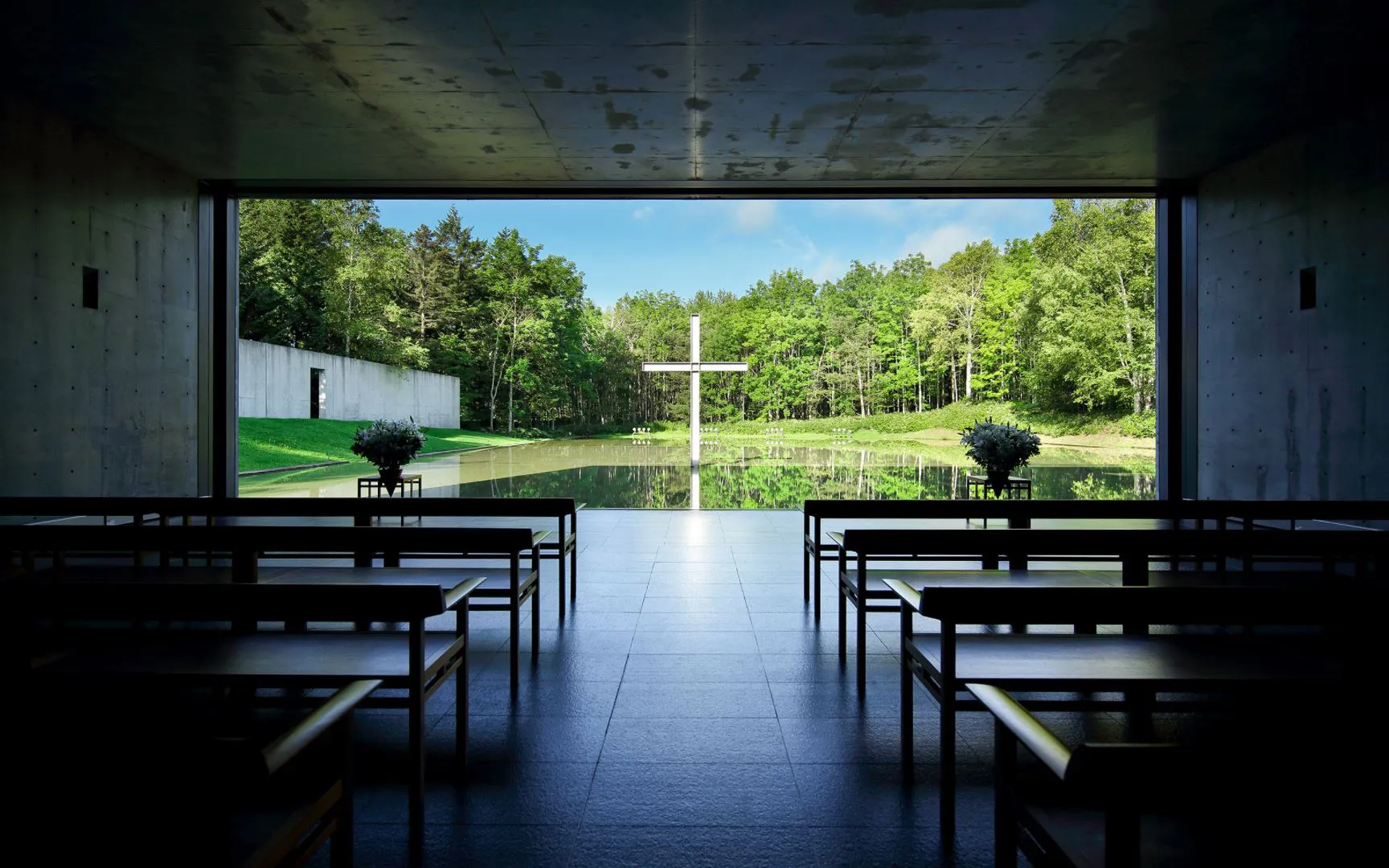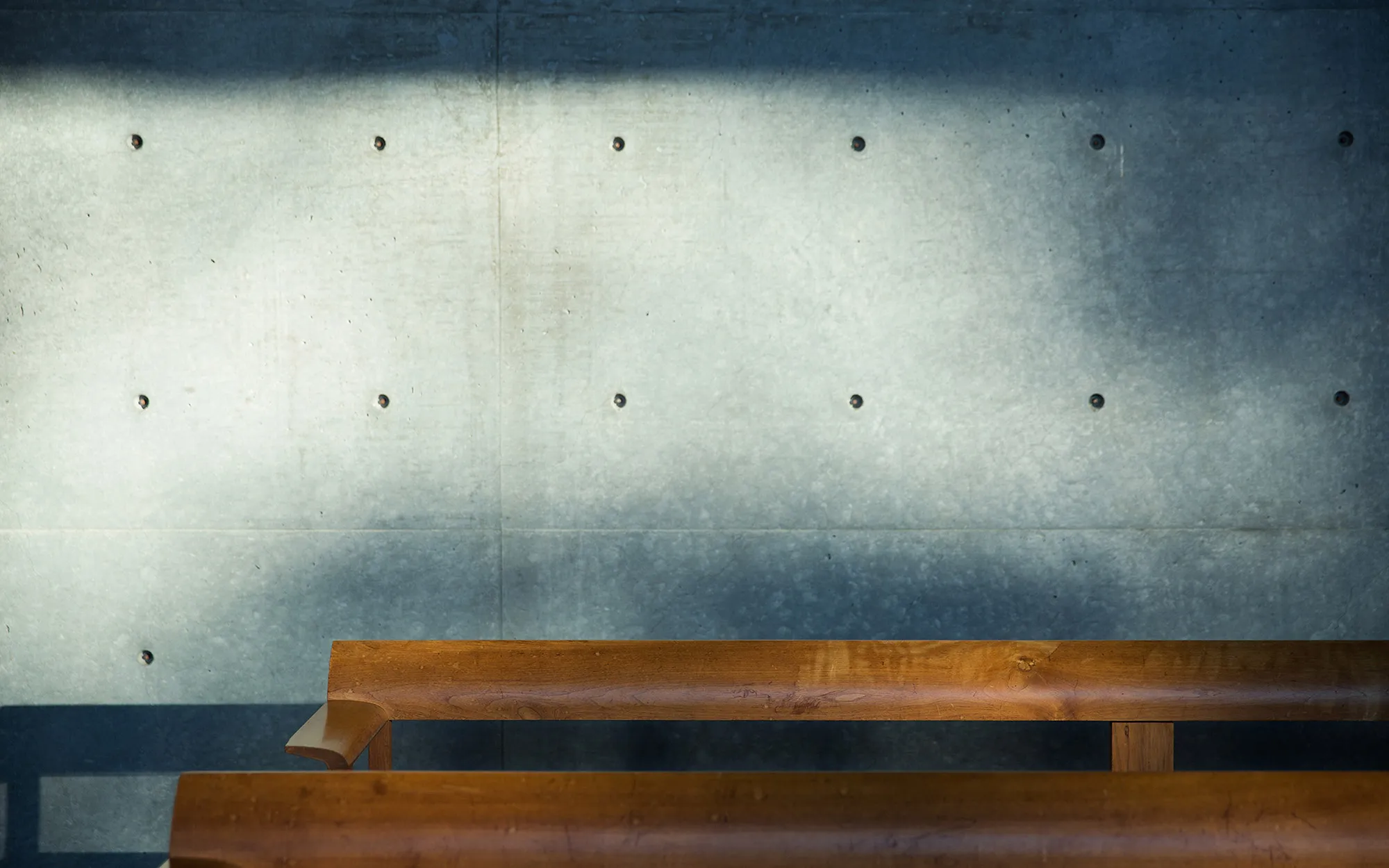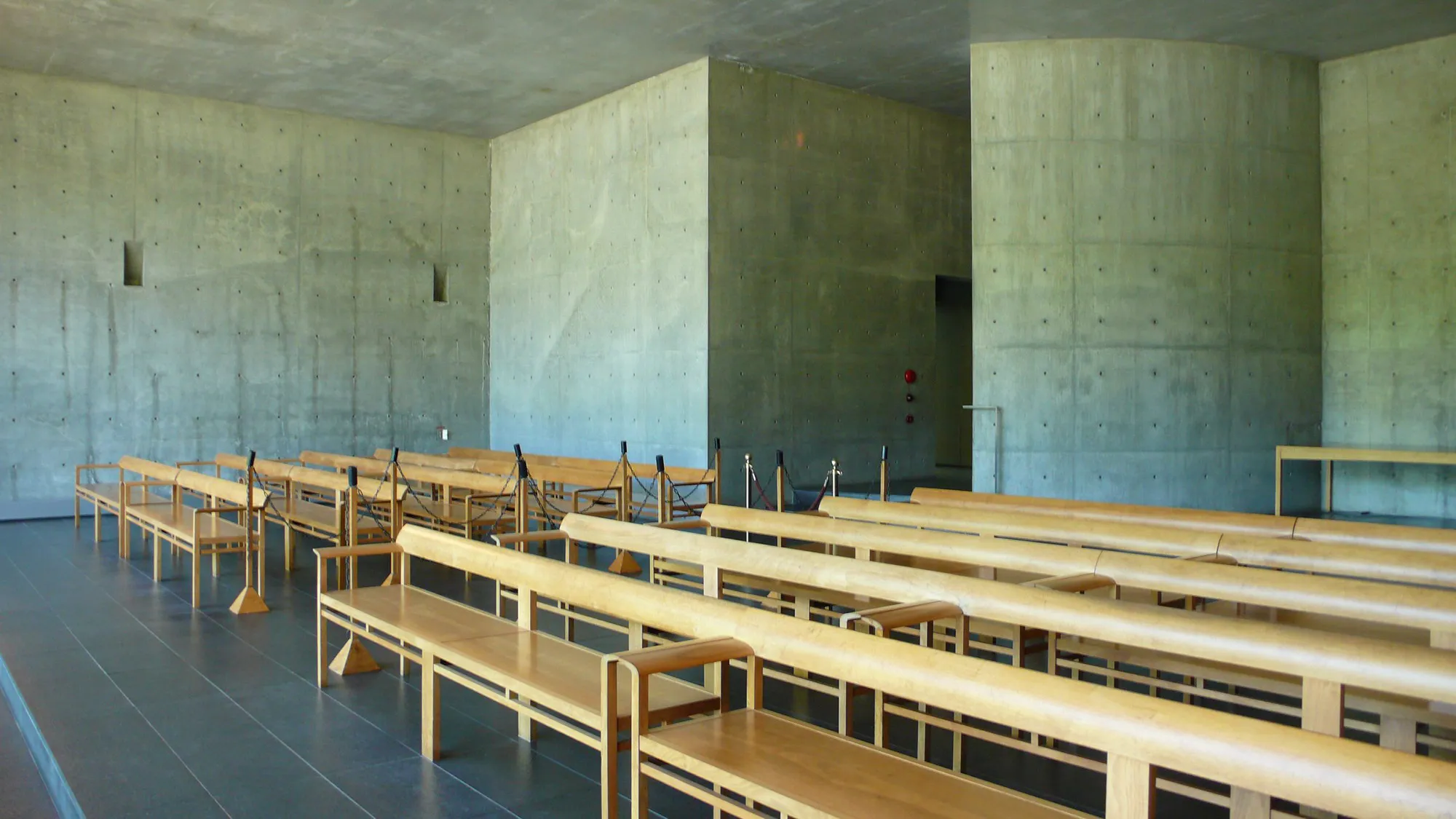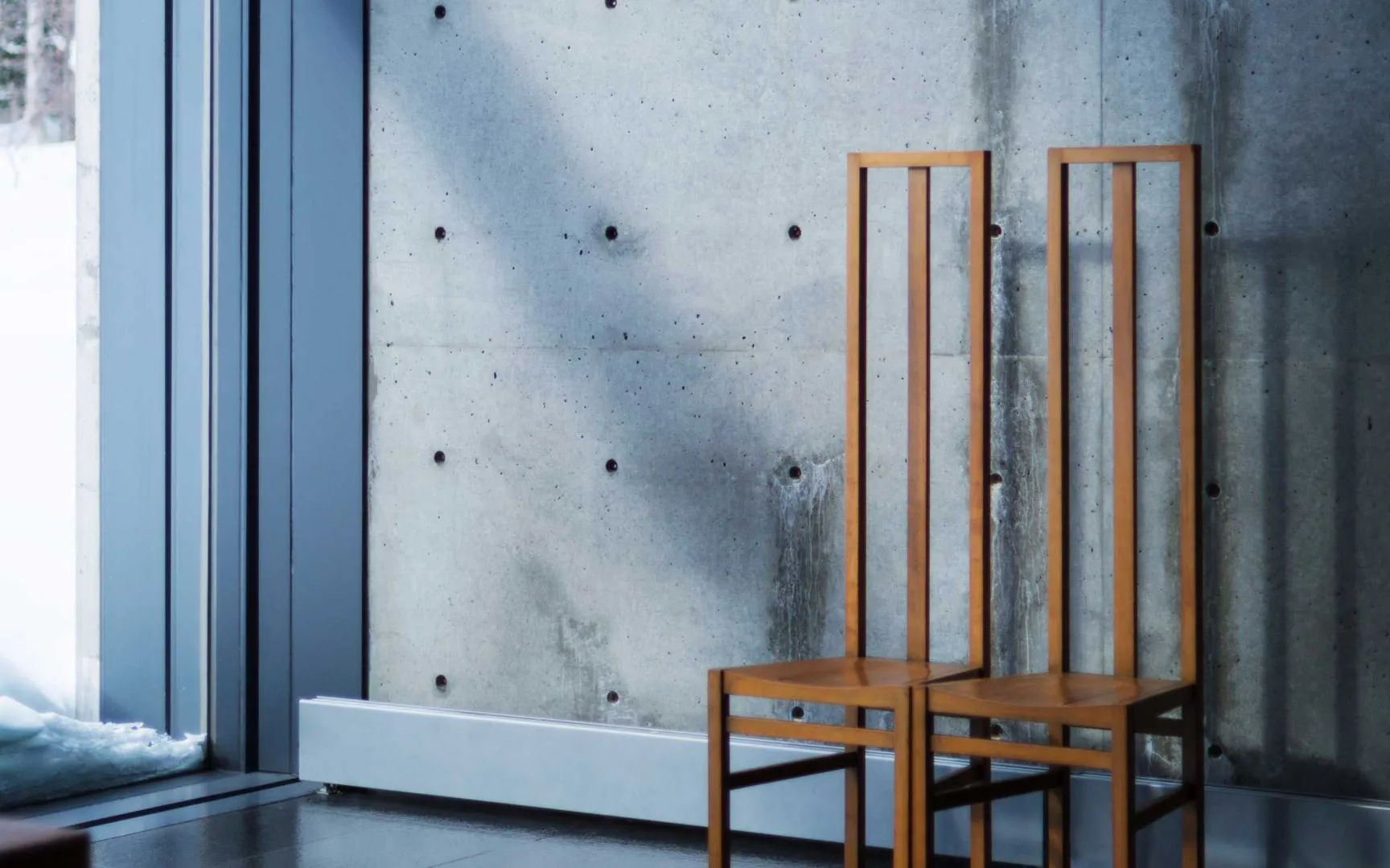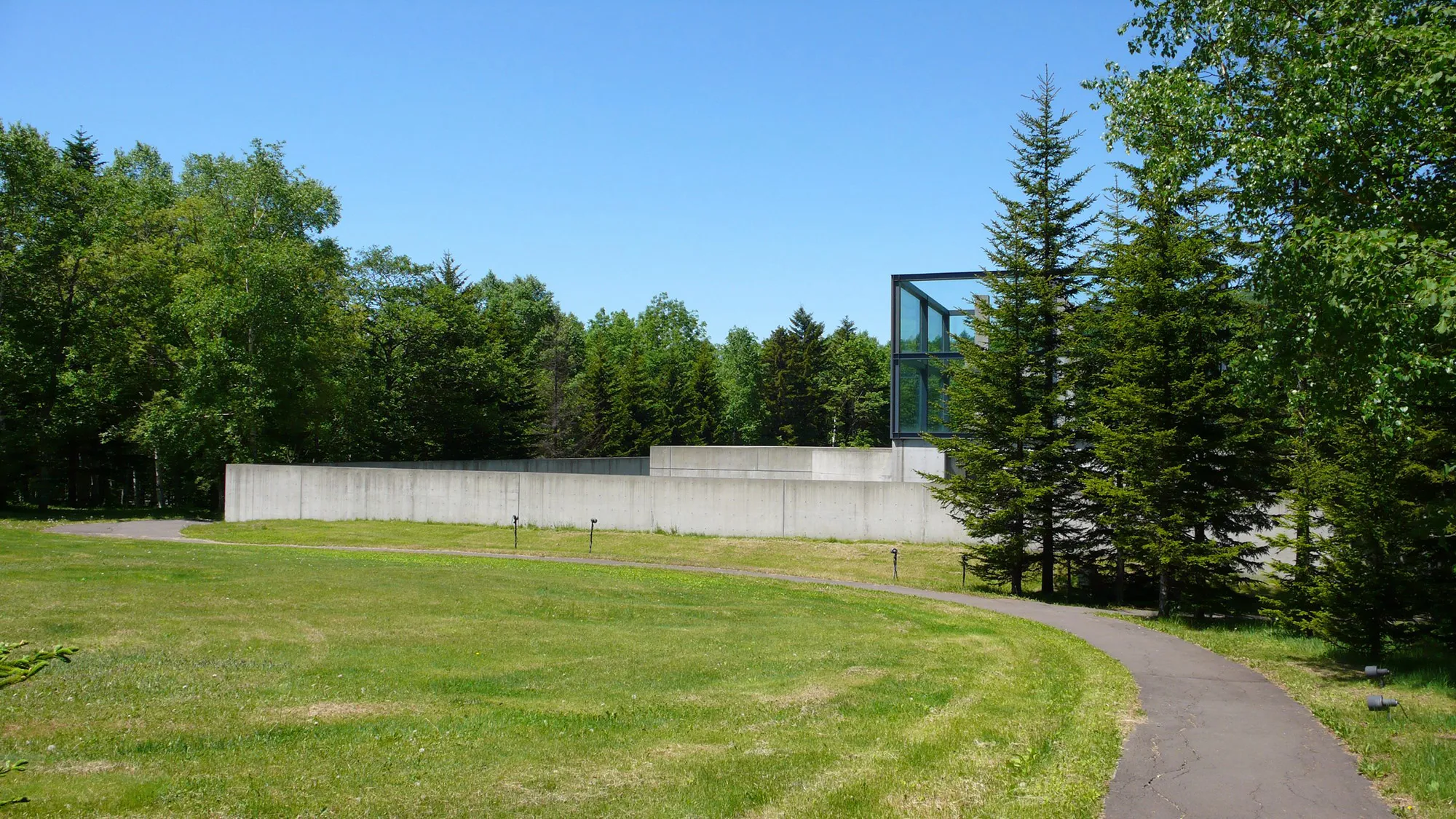Tadao Ando’s Church on the Water in Hokkaidō, Japan transforms faith into spatial experience, where light, water, and concrete merge to evoke the quiet power of nature and the sacred.
Completed in 1988, the project remains one of Ando’s most distilled expressions of his lifelong dialogue between nature and structure, between silence and revelation. It is a work that does not announce itself but rather unfolds—its presence discovered through movement, reflection, and light.
Originally conceived for Kobe’s coast as a chapel floating on the sea, the church found its truer form inland, in Tomamu. Here, Ando exchanged the vastness of the ocean for the intimacy of a pond, transforming the concept of floating into one of reflection. The mirrored surface of water became the project’s spiritual anchor, its stillness holding the cross that seems to hover effortlessly above. The relocation did not alter Ando’s vision; it deepened it, binding the building to the rhythms of the northern landscape.
Approach in Ando’s architecture is always ritualistic. At the Church on the Water, one enters not directly but through absence. A concrete wall diverts the visitor’s path, concealing the chapel and forcing an act of discovery. This gradual revelation echoes the logic of pilgrimage—the slowing of time, the calibration of senses. When the pond finally appears, framed by raw concrete and glass, it is not as a backdrop but as the essence of the sacred itself.
Inside, the dialogue between light and material intensifies. The reinforced concrete—Ando’s chosen medium for its purity and honesty—becomes a vessel for light to articulate. The interior’s restraint allows illumination to define the space; morning light slides across smooth surfaces, refracting gently through glass onto water. Four interior crosses mark the threshold between human and divine perception. Descending the spiral stairway, one arrives at the chapel’s final moment: the cross floating beyond the glass, dissolving into the horizon.
This choreography of light, space, and movement reflects Ando’s mastery of material and climate. The thick, insulated concrete walls speak to the pragmatism required in Hokkaidō’s severe winters, yet practicality never outweighs poetry. The glass façade becomes a mutable boundary between the human interior and the living world beyond. As seasons shift, the view becomes a chronicle of time: spring’s renewal, summer’s verdant calm, autumn’s retreat, winter’s erasure. The church thus becomes both shelter and observatory—a vessel for the changing earth.
In this work, Ando renders architecture not as monument but as threshold. The Church on the Water is an architecture of restraint and reverence, where the natural world and spiritual contemplation merge without ornament. Its simplicity reveals a profound truth: that the sacred may be found not in grandeur, but in the quiet alignment of human intention with the stillness of nature.


